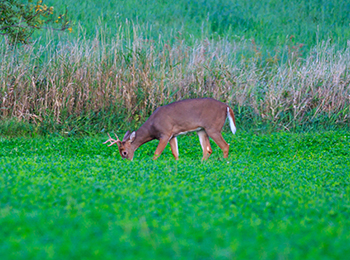Food Plot Prep
Sep 25, 2023

Planting food plots is the most popular wildlife management practice among landowners wanting to enhance the environment for deer. However, successful food plots require regular planting and management. Here are seven tips to consider:
Your local Co-op carries a large selection of food plot seed, planting equipment, wildlife feed, feeders, and more. Speak with one of our knowledgeable staff members to develop a food plot management plan for this season. After all, who knows the outdoors better than farmers? No one! Find the nearest store location here.
For more content like this, check out the latest issue of The Cooperator.
- Ask the right questions
- Test the soil
- Prepare the soil
- Select deer-preferred crops
- Control your weeds
- Prohibit access to a small area
- Stay in for the long haul
Your local Co-op carries a large selection of food plot seed, planting equipment, wildlife feed, feeders, and more. Speak with one of our knowledgeable staff members to develop a food plot management plan for this season. After all, who knows the outdoors better than farmers? No one! Find the nearest store location here.
For more content like this, check out the latest issue of The Cooperator.